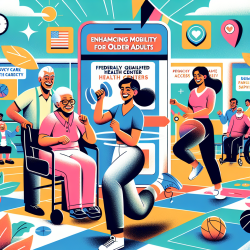Introduction
In the realm of pediatric healthcare, tracheostomy procedures are often necessary for some of the most medically complex patients. Despite being a rare occurrence, these procedures account for a significant portion of pediatric hospital costs. The study "Pediatric Tracheostomy Outcomes After Development of a Multidisciplinary Airway Team: A Quality Improvement Initiative" sheds light on how a dedicated multidisciplinary team (MDT) can enhance care quality and reduce costs associated with pediatric tracheostomies.
The Multidisciplinary Approach
The Children’s Health Airway Management Program (CHAMP) was established to address the unique challenges of pediatric tracheostomy care. This initiative involved creating a dedicated team comprising various specialists, including otolaryngologists, pulmonologists, nurses, respiratory therapists, and speech-language pathologists. The team focused on standardizing tracheostomy care from preplacement counseling to postoperative management and caregiver education.
Key Findings
The study highlighted several improvements following the implementation of the MDT:
- Reduction in the mean time to first education class from 13.7 days to 1.9 days.
- Increase in speech-language pathology consultation rates from 68% to 95%.
- Decrease in the length of hospital stay from 133 days to 96 days.
- Cost reductions for shorter hospital admissions, although costs increased for prolonged stays.
Implications for Practitioners
For practitioners, the study underscores the importance of a coordinated, multidisciplinary approach to pediatric tracheostomy care. By adopting similar strategies, healthcare providers can potentially improve patient outcomes and reduce costs. Key strategies include:
- Establishing a dedicated tracheostomy care team.
- Standardizing procedures and care protocols.
- Enhancing caregiver education and support.
- Monitoring and adjusting care plans based on performance metrics.
Encouragement for Further Research
While the study provides valuable insights, it also highlights the need for further research into the economic impacts of MDTs in pediatric care. Practitioners are encouraged to explore additional studies and data to refine and optimize tracheostomy care protocols further.
Conclusion
The establishment of a multidisciplinary tracheostomy team has proven beneficial in improving care quality and reducing hospital stays and costs for pediatric patients. Practitioners are encouraged to consider adopting similar approaches to enhance patient outcomes and operational efficiency in their practices.
To read the original research paper, please follow this link: Pediatric Tracheostomy Outcomes After Development of a Multidisciplinary Airway Team: A Quality Improvement Initiative.










